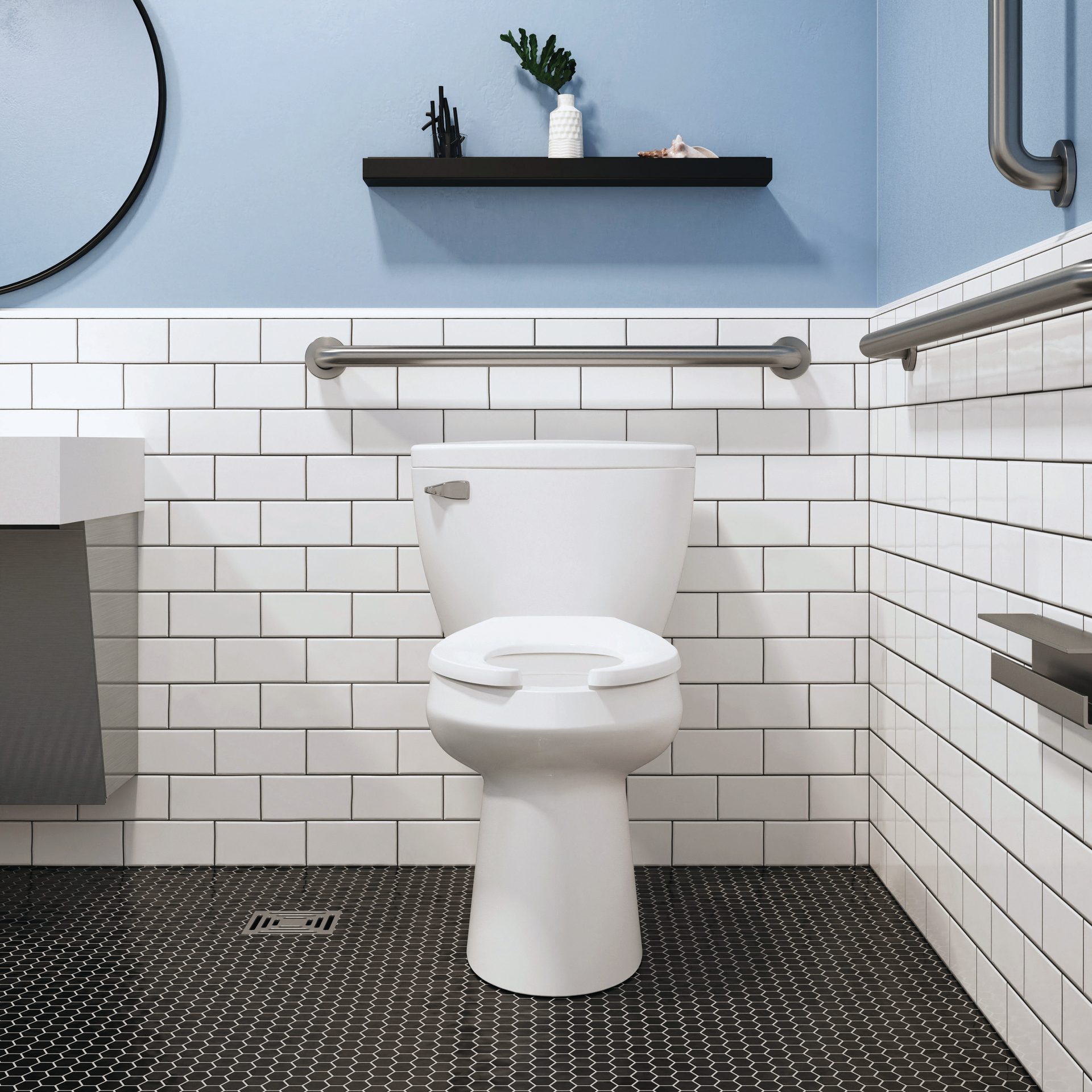commercial market update
Where low flow meets high efficiency
The latest and greatest tactics to help conserve water in commercial restrooms.
By Rolando Zambrano

Thinnapob / iStock / Getty Images Plus
Now more than ever, water conservation is a critical concern for commercial facilities – and the conversation around how to save water always starts in the restroom.
Restrooms are high-traffic areas that account for a substantial portion of a facility’s total water use. In fact, according to the U.S. Department of Energy, about 60% of all water used in a commercial facility is used in toilets, sinks, and urinals.
Traditional flushometers as well as gravity toilets use up to 1.6 gallons per flush (gpf), while older models consume even more. And while not as water intensive as toilets, handwashing stations and maintenance efforts can contribute to overall water usage as well.
That’s why, as awareness and regulations around environmental sustainability continues to increase, facilities are beginning to turn to low-flow, high-efficiency restroom fixtures to help significantly reduce water and utility costs.
Innovations leading the way
Ultra-high efficiency restroom fixtures can help facilities conserve water. A great example is the pressure-assisted toilet. These toilets utilize pressurized air to enhance flushing power, resulting in less water per flush. Today, 0.75 gpf pressure-assisted toilets are the most efficient on the market, achieving the lowest flush volume available while maintaining powerful performance. In addition to conserving water, these toilets feature an optional hydrophobic glaze to inhibit bacteria growth and ensure easier cleaning.

The new ultra-high efficiency system uses 53% less water than 1.6 gpf models without compromising performance.
Hybrid urinals are another example of a product that combines the best of water-efficiency with the latest technology. While hybrid urinals do not use water to eliminate urine, the Jetrinse™ Solution Technology automatically purges the housing and pipes, rinsing them thoroughly to prevent the buildup of sediment every 72 hours. The result is clean, odor-free operation, with virtually no maintenance aside from typical wipe downs and cartridge changes. Hybrid urinals also come with seamless retrofitting options, making them ideal for existing commercial spaces.
Innovative faucet designs, such as solar-powered faucets, improve water efficiency during handwashing as well. These faucets meet the criteria for WELL credits and promote hygiene with self-guided handwashing instructions.
Facility managers can also consider reclaimed water systems as a potential solution. These systems collect and treat wastewater from sinks and showers, which can then be reused for toilet flushing. By utilizing reclaimed water, commercial facilities can significantly reduce their reliance on potable water, thereby cutting costs and conserving natural resources.
Efficiency is key
Ultra-high efficiency toilets (UHETs) like 0.75 gpf pressure-assisted models offer multiple advantages beyond just water savings. For one thing, reducing water usage translates directly into lower utility bills. Switching from traditional 1.6 gpf toilets to 0.75 gpf models can save nearly one gallon per flush, significantly cutting water costs over time.
Flushmate’s 503UH Series 0.75 pressure-assisted systems enhance flushing power and drain line carry, ensuring waste removal is efficient and quiet at the same time.

Sloan’s 0.75 gpf pressure-assisted toilets achieve the lowest flush volume in the industry, offering robust performance with reduced water usage.

Contrary to concerns about performance, UHETs deliver excellent flushing power. Pressure-assisted toilets help push waste further down the drain line, decreasing the likelihood of backups and clogs. Additionally, the higher velocity and pressure of rim jets in UHETs provide better bowl scrubbing, keeping toilets cleaner with each flush. Combining these performance traits with antimicrobial glazes helps ensure a more hygienic restroom environment.
It's also crucial to consider that specifying UHETs and other water-efficient fixtures can help commercial facilities earn LEED credits. Products like 0.75 gpf toilets qualify for maximum points under the LEED v4.0/4.1 Indoor Water Use Reduction category. These products not only support global water conservation initiatives but also enhance a building’s green credentials.
Brands behind the performance
The innovation of 0.75 gpf pressure-assisted toilets from industry leaders like Sloan and Flushmate represents a significant step toward greater water efficiency in commercial restrooms. These products exceed current standards for water savings and performance.
The new toilets are also helping guide the design of lower flush volumes of commercial restroom applications in buildings around the world.
By integrating these advanced fixtures – along with adopting other water-saving habits like reclaimed water, hybrid urinals, and more – commercial facilities can significantly reduce their water footprint, contributing to broader sustainability goals while maintaining high standards of sanitation and user satisfaction.
Rolando Zambrano is Sloan’s flushometer and fixture product line manager and has worked across a wide range of applications in his 17 years at the company. Sloan has been providing innovation in water-saving fixtures for 118 years.
Images courtesy of Sloan and Flushmate.
